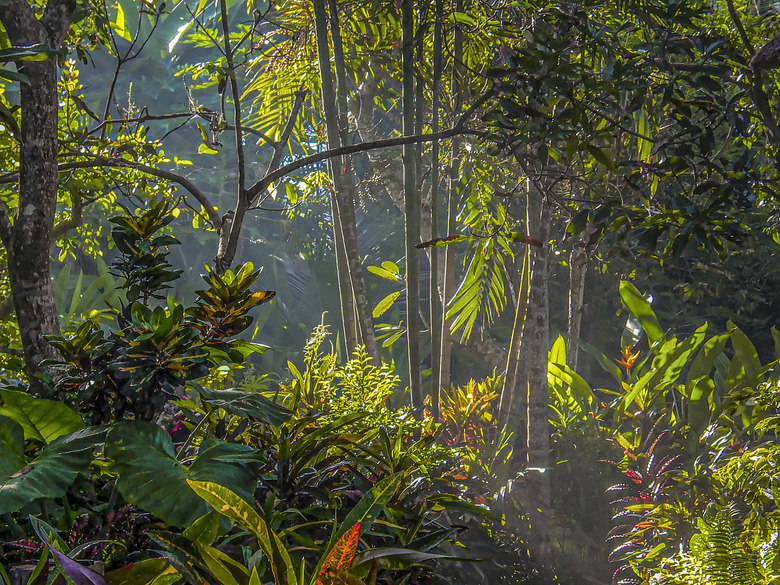Parasites In The Rain Forest
Rain forests cover about 5 percent of the earth's land surface but harbor about one-half of the world's plant and animal species. Scientists have been able to investigate only a fraction of the diverse entities existing in rain forests, and environmental groups are actively trying to stop these habitats from being destroyed, before more undiscovered species are lost forever. Rain forests are filled with plants growing on other plants such as parasites.
Parasites
Parasites
Some parasites live off of a host's blood or tissues. Others seem to take control of the host's biological or neurological functions. Unlike symbiotic relationships, where both species benefit from the relationship, parasitic relationships are one-sided with no apparent benefits to the host. Many parasites are deadly to their hosts, while others are relatively benign. Research scientists are trying to determine if parasitism actually encourages the host to evolve, and in some ways actually benefits the host species.
Fungi Parasites
Fungi Parasites
David Huge, an assistant professor of entomology at Pennsylvania State University, has found four types of fungi parasites belonging to the Ophiocordyceps unilateralis family in the Zona da Mata area of the Brazilian rain forests. These fungi attack carpenter ants and seem to turn them into zombies. Similar fungi species launch attacks on ants in Indonesia and Australia.
Plant Parasites
Plant Parasites
The largest flower in the world, Rafflesia arnoldii, is actually a parasite that lives within its host, a woody plant of the grape family. Rafflesia is found in Sumatra and Borneo, in Southeast Asia. According to Steve Davis of the Royal Botanic Gardens, this rare parasite is only revealed when its buds break through the bark of the host. The flower is 2 feet in diameter and carrion flies pollinate it; the flies are attracted to the fetid odor that has earned Rafflesia the name "corpse flower." This flower is prized for its medicinal uses.
Insect Parasites
Insect Parasites
Ants that had been thought to be predators have been found to exist in a symbiotic relationship with another class of insects, which parasitize trees in the rain forests in Peru and Brunei, according to Diane Davidson, a professor of biology at the University of Utah and author of a study on ants in the canopies of the rain forests. The ants feed on "honeydew" produced by scale insects and sapsuckers, which suck the juices out of the host plants and trees. The ants protect the parasites from predatory insects and birds.
Cite This Article
MLA
Nomi, Jacob. "Parasites In The Rain Forest" sciencing.com, https://www.sciencing.com/parasites-rain-forest-8582438/. 22 November 2019.
APA
Nomi, Jacob. (2019, November 22). Parasites In The Rain Forest. sciencing.com. Retrieved from https://www.sciencing.com/parasites-rain-forest-8582438/
Chicago
Nomi, Jacob. Parasites In The Rain Forest last modified March 24, 2022. https://www.sciencing.com/parasites-rain-forest-8582438/
